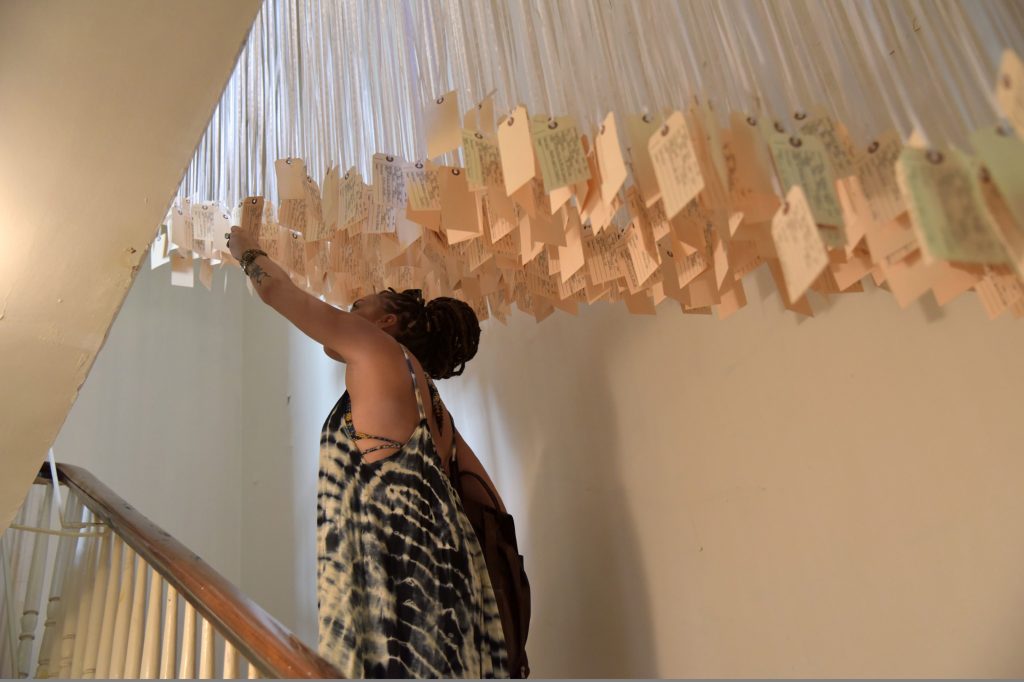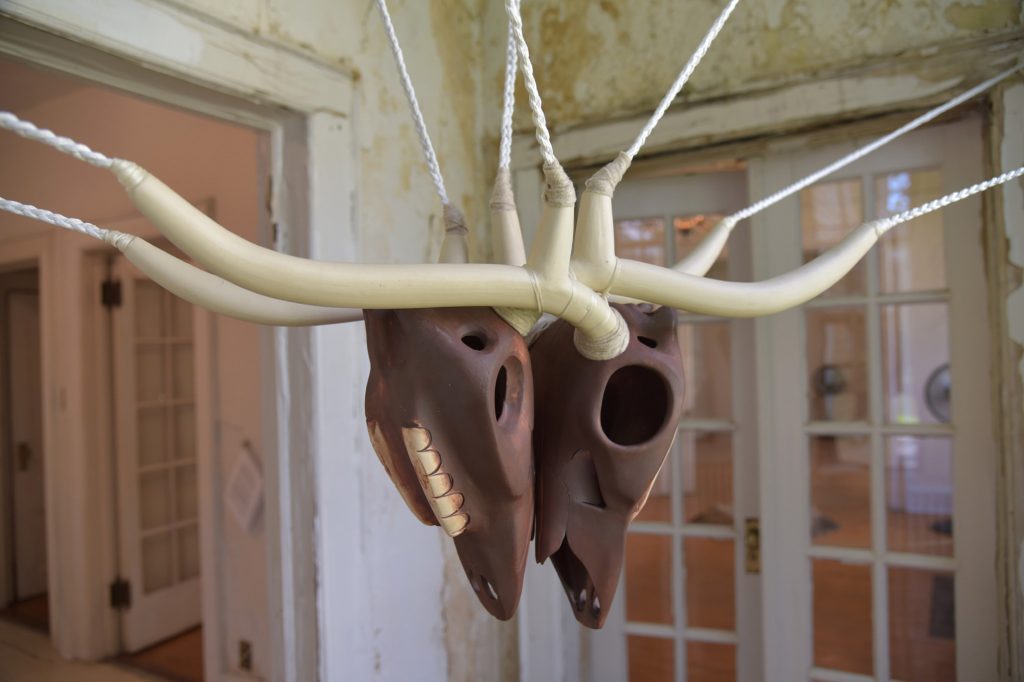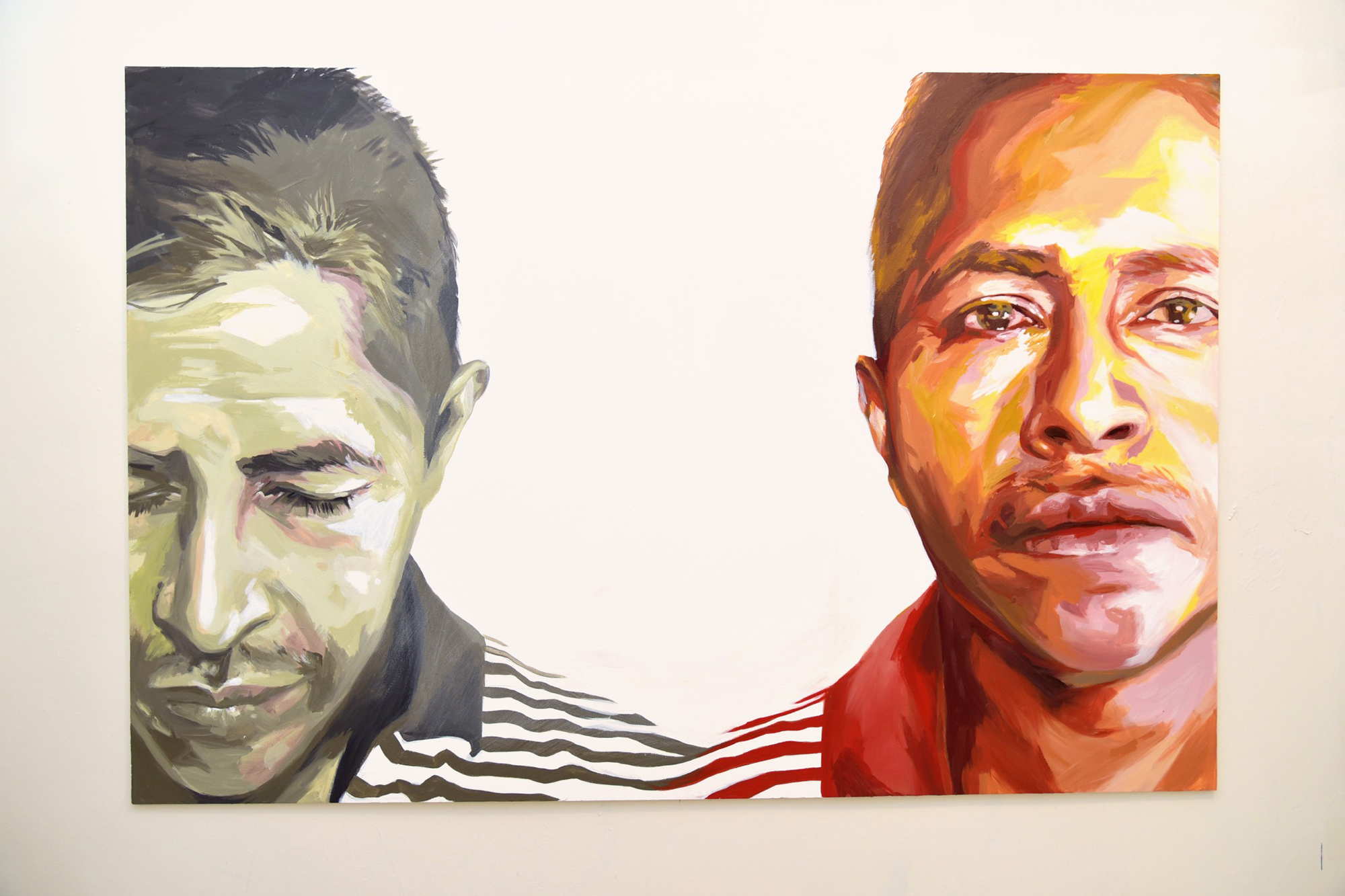As a former high school teacher and history museum educator who talked with young people about racial injustice, Katie Fuller wanted to do more than simply design classes around the issue as a forum for discussion with students.
Conducting research on the history of racial injustice in the United States, Fuller decided to focus on the roots of the issue at the founding of the nation, and developed an art exhibition exploring racial injustices specific to Indigenous, African, and African American peoples during the American Revolution. The exhibit, “Race and Revolution,” is currently on display on the Rich Concourse of UConn’s Stamford Campus, 1 University Place, through Nov. 30.

The exhibition, which originated at Nolan Park on Governor’s Island in New York City, includes works from nine artists who reflect the cultural heritages of the United States – including Indigenous, African American, Latin American, Canadian-Trinidadian-American artists – representing a variety of media, including paintings, sculpture, photography, mixed media, and installations.
Fuller says the exhibition is the first contemporary art showcase to explore racial injustices during the American Revolution, and uses excerpts from documents written by leaders of the time to show that racism today still bears a startling resemblance to racism from over 250 years ago.
An example she cites is an excerpt from the Declaration of Independence, written by Thomas Jefferson, which accompanies the installation “Angry Indian Mask,” by sculptor and photographer Jorge Alberto Perez. The text, part of the list of grievances against King George III of Great Britain, says: “He has excited domestic insurrections amongst us, and has endeavoured to bring on the inhabitants of our frontiers, the merciless Indian Savages, whose known rule of warfare is an undistinguished destruction of all ages, sexes, and conditions.”
When people have strong reactions they’re going to go home and continue to think about it. That’s the whole point. — Katie Fuller
Fuller notes the exhibition does not offer interpretation beyond what the artists have provided, saying, “We want to respect how viewers might process the exhibition and give them the space to come to their own understandings of the history being presented – what I refer to as Colonial entitlement – and how this history may have impacted racist ideologies experienced today.”
Terrence Cheng, director of UConn’s Stamford campus, says the exhibition allows the campus, and the University, to be a central part of an important discussion about history, race, diversity, culture, and justice.
“Race and Revolution brings richness and value to our students and faculty, while also providing an opportunity for the Stamford community to engage,” he says.

In its debut this summer on Governor’s Island, “Race and Revolution” was displayed in a 19th century house, with the art spread throughout the rooms of the home. Fuller says the linear exhibition along the Rich Concourse of the Stamford campus building, which can be seen from the street, provides visitors with the opportunity to think about a familiar space.
“The thing that’s fascinating about where the exhibit is now is it forces people to rethink the space that they use every day,” Fuller says. “I like that it is reinterpreting the space people use every day. That’s pretty special.”
During its run in New York, Fuller says visitors often reacted emotionally to the contrast of words written more than two centuries ago and the artist’s response to those words in the 21st century.
“You could see people were so deeply connected to what the show was trying to do. Some cried in healing ways. Some thought it was disrespectful to American history and patriotism,” she says. “I had a friend remind me that I did my job. When people have strong reactions they’re going to go home and continue to think about it. That’s the whole point.”
The opening reception for the exhibition is on Thursday, Oct. 13, from 6 to 8 p.m. For more information about “Race and Revolution,” go to Stamford.uconn.edu.



